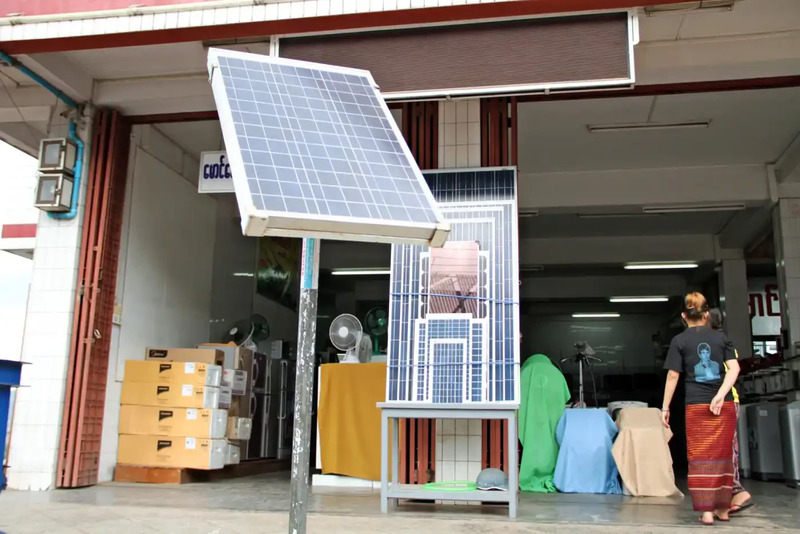Press Releases
Electricity-starved Myanmar takes a shine to solar power
21 November 2014

YANGON -- Large solar power generation projects are increasingly taking root in Myanmar as the government races to alleviate a serious electricity shortage and reduce the country's dependence on hydropower.
Green Earth Power (Thailand), a Thai renewable energy powerhouse, and ACO Investment Group, a U.S. investment fund, have reached agreements with Myanmar's government on projects to develop solar power plants with capacities of over 100 megawatts each. The facilities are expected to come onstream as early as 2015.
Green Earth Power plans to build a 220MW plant in Magway Region, in central Myanmar, at a cost of $350 million. Construction will start in spring 2015 and progress in stages through spring 2017, according to the company. Part of the facility will become operational in 2015, producing at least 50MW of electricity.
30-year deal
Green Earth Power signed a memorandum of understanding with the government in 2013 and recently unveiled a detailed investment plan for the project. Under the agreement, the Ministry of Electric Power will buy electricity produced by the plant for 30 years after the start of operation. The power is likely to be supplied to households in Magway Region.
ACO plans to spend a total of $480 million to build solar facilities with a total capacity of 300MW in Mandalay Region, also in central Myanmar. It will be one of the biggest U.S. investments in the Southeast Asian nation since the country began treading the path toward democracy.
The ACO facilities are expected to account for about 10% of Myanmar's power generation when completed.
SPCG, another Thai solar farm developer, is considering building and operating a plant with a capacity of several megawatts.
Only about 30% of households in Myanmar have access to power. The ratio is even lower in rural areas. In Yangon, the largest city, and Naypyitaw, the capital, the ratio is 60-70%. But there are more than 20,000 villages without any electricity at all.
With electricity demand projected to increase 700% between 2012 and 2030, the government is racing to develop power generation facilities to keep up with the expansion.
Diversifying away from hydropower
Myanmar is heavily dependent on hydropower, which accounts for 70-80% of the country's electricity production. This is problematic because power output from hydropower plants fluctuates wildly due to large differences in rainfall between the rainy and dry seasons.
The government is thus seeking to diversify the country's power sources by expanding thermal and green energy power generation.
Coal-burning plants can produce electricity at lower costs than other types of thermal power facilities. But building these facilities is a lengthy process due to time-consuming environmental impact assessments.
As a result, the government intends to promote the development of renewable power sources, such as solar and wind power. It may consider simplifying the approval procedures for investment plans targeting renewable energy.
Source: asia.nikkei.com

